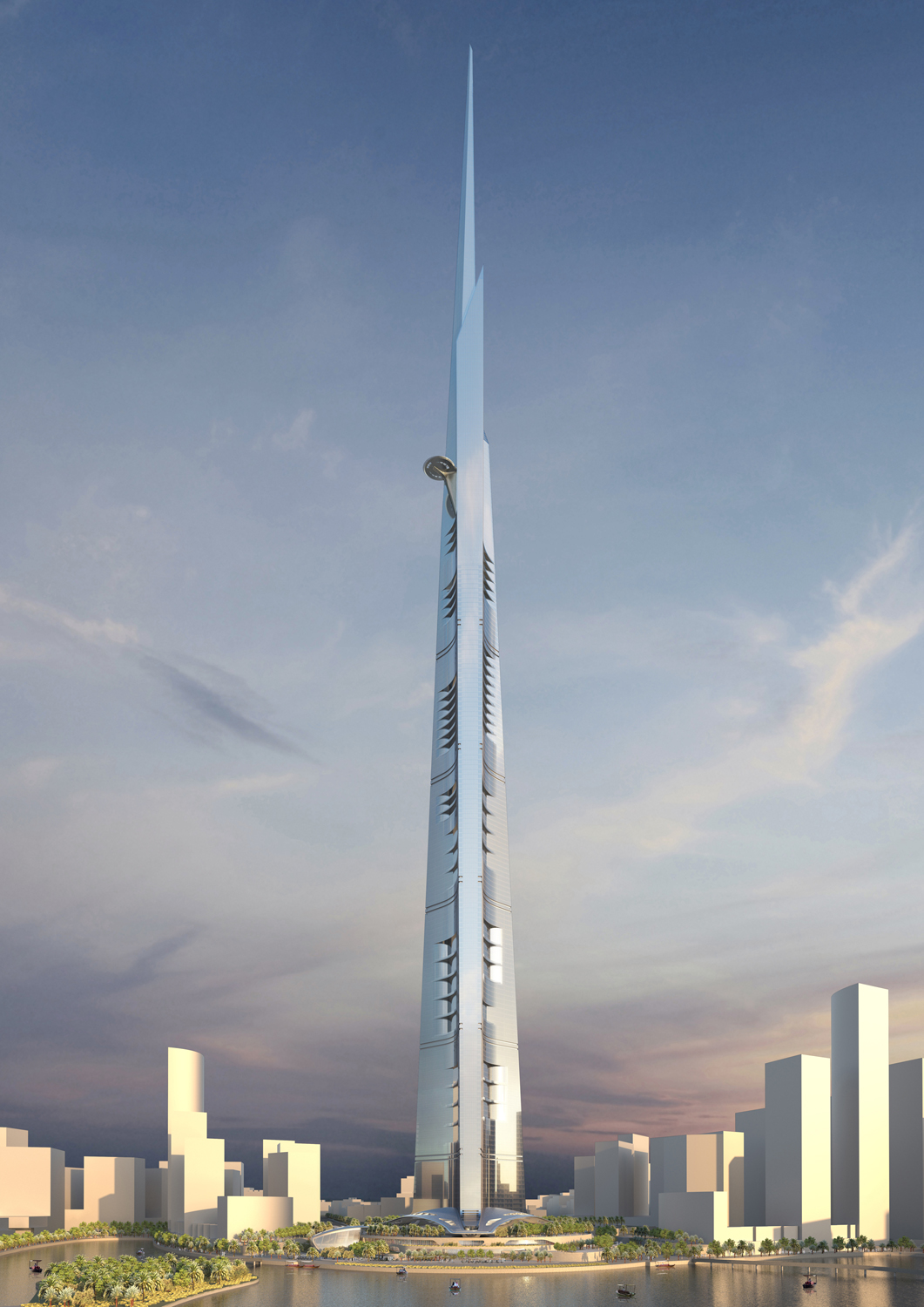

Across the globe, more than 100 buildings have reached a height of 300 meters (the approximate height of the Eiffel Tower) or higher, putting them in a category architects call “supertall.” Many of them sprang up in the past dozen or so years, which could be considered the supertall era. But according to the Council on Tall Buildings and Urban Habitat, as reported by Dezeen, supertall is SO last decade. Now we’re entering the regime of the megatall skyscraper, a category reserved for behemoths taller than 600 meters.
At the moment, only three buildings qualify as megatalls: Dubai’s 2,717-foot (828-meter) Burj Khalifa (completed in 2010), the 2,073-foot (632-meter) Shanghai Tower (completed in 2015), and Mecca’s 1,972-foot (601-meter) Makkah Royal Clock Tower (completed in 2012). But that number is expected to more than double by 2020, as four more join the list: Shenzhen’s Ping An Finance Centre, Wuhan’s Greenland Center, Jakarta’s Signature Tower, and Jeddah’s Kingdom Tower. When the latter is completed in 2018, it will reach over 3,200 feet (about a kilometer) in height and become the new tallest building in the world. Photos and illustrations of all these megatall structures are in the gallery above.
Why are all of these megatall buildings rising in Asia and the Middle East, while North America and Europe avoid the trend? It could be because skyscrapers, in addition to providing extra real estate, give rising powers a potent symbol of wealth and progress. Because these buildings don’t just have high price tags—they also incorporate cutting-edge scientific advances.
To build structures that fit comfortably into an urban environment and remain stable even as they stretch to absurd heights, architects rely on: advanced materials, such as specially-treated glass; new tech applications, which could give a building the illusion of an invisibility; and engineering innovations, which may eventually include magnetically levitating elevators. Or maybe western nations are just more worried about buildings that waste space and can melt cars.





